Future Energy

How can wind energy contribute to a sustainable future ?
Wind energy is a renewable and sustainable source of power that can significantly contribute to a more sustainable future. It offers several benefits including reducing carbon emissions, stimulating economic growth, enhancing energy security, driving technological innovation, compatible land use, community engagement, scalability, improving health impacts, and promoting education and awareness. By incorporating wind energy into our energy mix, we can create a cleaner, healthier, and more sustainable environment for future generations.

What is the future outlook for clean energy investment ?
The future outlook for clean energy investment is positive, driven by government policies, technological advancements, and growing demand for sustainable energy sources. However, challenges related to intermittency, infrastructure integration, and competition from fossil fuels need to be addressed to ensure the continued growth of the sector.
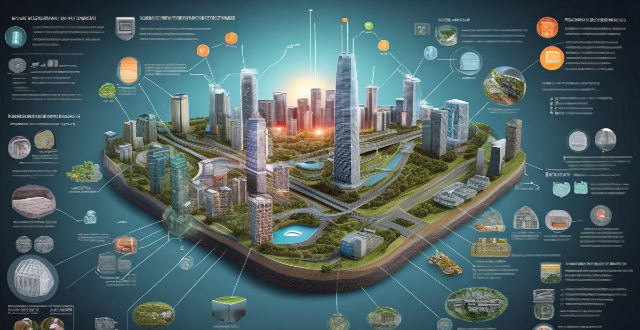
What is the future of nuclear energy in the energy market ?
The future of nuclear energy is promising, as it has advantages such as low carbon emissions, high energy density and baseload power. However, challenges like safety concerns, waste disposal, and high costs must be addressed. Increasing demand for clean energy, advances in technology, and integration with renewable sources can drive the growth of nuclear energy in the future.

What is the impact of climate decisions on future generations ?
This text discusses the far-reaching impacts of climate decisions on future generations, including environmental issues such as rising sea levels and loss of biodiversity, economic shifts related to job markets and infrastructure costs, and societal effects like health concerns and political stability. It emphasizes the importance of taking immediate action to mitigate these impacts and create a sustainable future for all.

What is the future potential of compressed air energy storage (CAES) ?
Compressed air energy storage (CAES) is a promising technology that has the potential to revolutionize the way we store and use energy. Key points about its future potential include increased efficiency and scalability, low cost and long lifespan, environmental benefits, and integration with other technologies. CAES systems can be scaled up or down depending on the amount of energy storage required and offer good value for money over their lifetime. They also have a long lifespan, typically lasting 20 years or more with proper maintenance. Additionally, CAES systems can help reduce carbon emissions by using renewable energy sources such as wind and solar. Finally, they can stabilize the grid during peak demand periods and be combined with other forms of energy storage to create hybrid systems that offer even greater flexibility and efficiency.

What challenges does the Clean Energy Revolution face in the future ?
The clean energy revolution is a global effort to transition from fossil fuels to renewable energy sources. This transition faces several challenges in the future, including technical, economic, social, and political factors. Some of these challenges include developing efficient and cost-effective energy storage solutions, upgrading existing grid infrastructure, high upfront costs for renewable energy infrastructure compared to traditional fossil fuel plants, job displacement in industries traditionally reliant on fossil fuels, raising public awareness about the benefits of clean energy, ensuring that clean energy benefits are distributed equitably across different socioeconomic groups and regions, consistent and long-term policy support, coordinated international efforts to tackle global climate change effectively, establishing stringent environmental standards and regulations, and proper planning and allocation of resources for infrastructure projects related to clean energy. Addressing these challenges will require concerted efforts from various stakeholders including governments, industry leaders, researchers, and the general public.
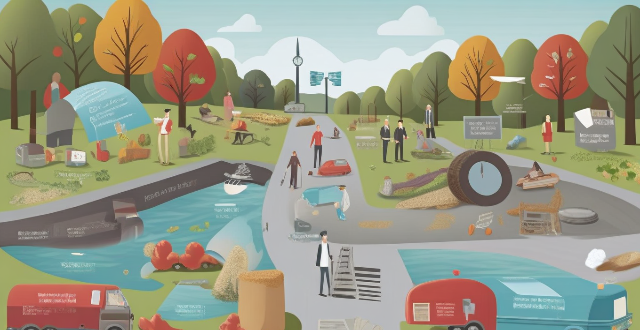
What are the implications of climate change negotiations for future generations ?
The implications of climate change negotiations for future generations are significant and multifaceted, affecting various aspects of life, including the environment, economy, society, and politics. Effective negotiations can lead to preserved natural ecosystems, mitigation of extreme weather events, job creation in renewable energy sector, reduction in energy costs, improved public health, enhanced quality of life, global cooperation, and leadership and innovation. These benefits highlight the importance of prioritizing the interests of future generations in climate change negotiations to ensure a sustainable and equitable world for all.
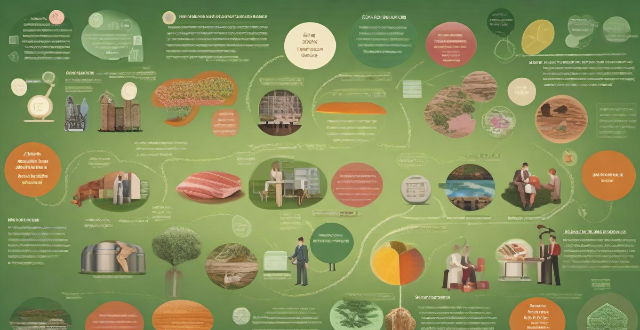
What policies can be implemented to reduce the number of climate refugees in the future ?
Policies to reduce the number of climate refugees in the future include investment in renewable energy, afforestation and reforestation, sustainable agriculture practices, coastal protection measures, and international cooperation and funding. These policies aim to mitigate the effects of climate change and prevent displacement of people due to climate change-related events.

What is the future of carbon credit systems ?
The future of carbon credit systems is uncertain and depends on various factors such as policy decisions, technological advancements, public opinion, and market dynamics. Governments play a crucial role in shaping the future of these systems through regulations and enforcement. Technological innovations can both increase and decrease the value of carbon credits. Public opinion can drive demand for carbon credits, while market dynamics will shape the industry's evolution. Despite challenges, there are opportunities for growth and improvement in this important area of environmental protection.

How does space exploration inspire future generations ?
Space exploration has been a source of inspiration for future generations in various ways, including igniting curiosity and wonder, advancing scientific knowledge, promoting international collaboration, encouraging careers in STEM, inspiring creativity and art, and nurturing resilience and perseverance. As we look toward the future, space exploration will continue to capture the imagination of young people around the world and spur them on to become the next generation of explorers, scientists, and engineers.
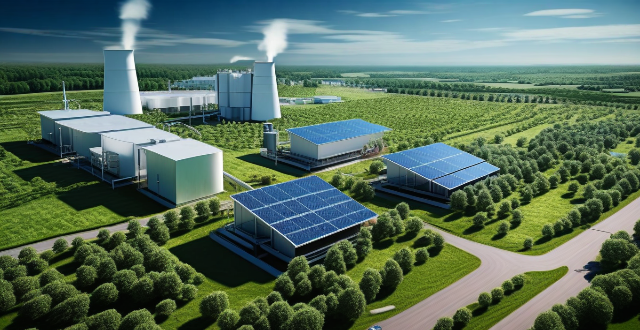
How do renewable energy sources contribute to industrial energy efficiency improvements ?
Renewable energy sources like solar, wind, hydropower, biomass, and geothermal power play a crucial role in enhancing industrial energy efficiency. They offer benefits such as reduced greenhouse gas emissions, lower operating costs, and increased reliability. By adopting these technologies, businesses can reduce their reliance on fossil fuels, increase energy independence, and contribute to a more sustainable future.

What are the potential long-term consequences of climate change for future generations ?
The potential long-term consequences of climate change for future generations include environmental, social, and economic impacts. Environmentally, rising sea levels can cause coastal erosion and loss of island nations, while extreme weather events like hurricanes and wildfires become more frequent. Biodiversity loss is also a major concern, with species extinction and the spread of invasive species disrupting ecosystems. Socially, food security is threatened by changes in crop yields and water scarcity, while health risks increase due to heat-related illnesses and the spread of diseases. Displacement and migration may lead to conflict and instability. Economically, decreased productivity in agriculture and fisheries, increased adaptation and mitigation costs, and job losses contribute to economic instability. Addressing climate change requires global cooperation and significant investments in both adaptation and mitigation strategies to ensure a sustainable future.

What is the future of e-sports and its integration with technology ?
E-sports, or electronic sports, have seen a meteoric rise in popularity over the past decade. As technology continues to evolve at a rapid pace, the future of e-sports looks brighter than ever before. In this article, we will explore the potential integration of e-sports with technology and what it means for the future of competitive gaming.

What is the role of hydrogen in the future energy market ?
The text discusses the potential role of hydrogen in the future energy market, highlighting its cleanliness as an energy source and its ability to store renewable energy. It also mentions hydrogen's potential use in transportation and various industrial applications. However, challenges such as infrastructure development, production methods, cost issues, and safety concerns need to be addressed for hydrogen to reach its full potential.

Can we trust climate models for future predictions ?
Climate models are designed to predict future changes in the Earth's climate based on scientific principles and past observations. Trust in these models depends on factors such as their scientific foundation, data quality, model complexity, intercomparison, historical validation, uncertainty quantification, and continuous improvement. While no model can perfectly predict the future, climate models offer valuable insights into potential future scenarios based on current knowledge and understanding. However, it is important to recognize their limitations and uncertainties when interpreting their results.

What is energy transition and why is it important ?
Text: Energy transition is the shift from traditional to renewable energy sources, important for reducing greenhouse gas emissions, promoting sustainable development, and improving energy security. Benefits include economic growth, environmental protection, and social progress.

How does clean energy investment compare to traditional energy investment ?
Investing in energy sources is crucial for the development and growth of any economy. However, the choice between clean energy investment and traditional energy investment has become a significant topic of discussion in recent years. This comparison will explore the differences between these two types of investments, focusing on their costs, benefits, and potential impacts on the environment and society.

What measures are taken to protect and preserve heritage sites for future generations ?
Heritage sites are invaluable treasures that provide insight into the history, culture, and traditions of a community or civilization. It is essential to protect and preserve these sites for future generations to appreciate and learn from. Here are some measures taken to safeguard heritage sites: 1. Legislation and Policies 2. Conservation and Restoration 3. Community Involvement and Education 4. Research and Documentation 5. Security Measures 6. Sustainable Tourism Practices
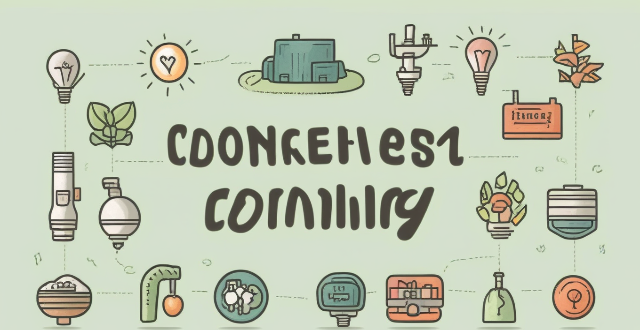
What is the relationship between energy-efficient appliances and overall energy savings ?
The text discusses the connection between energy-efficient appliances and overall energy savings, defining such appliances as those engineered to meet specific efficiency standards. These devices reduce direct energy consumption through lower power requirements and advanced technology, leading to long-term cost benefits and environmental advantages like reduced greenhouse gas emissions. To maximize savings, consumers should research and maintain these appliances properly and replace older models. The relationship underscores the importance of energy-efficient appliances in achieving energy savings for a more sustainable future.
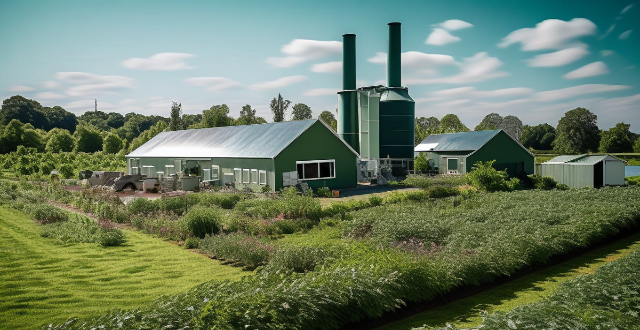
What are the benefits of investing in clean energy ?
Investing in clean energy offers benefits including reduction in greenhouse gas emissions, job creation, energy security, health benefits, and cost savings. It is a smart investment that aligns with our responsibility to protect the environment for future generations.

What is the future outlook for private equity ?
Private equity (PE) is a dynamic sector of the financial industry that involves investing in or acquiring companies, typically with the aim of improving their operations and selling them at a profit within a few years. The future outlook for private equity is influenced by various factors such as economic conditions, technological advancements, regulatory changes, and market trends. Here's a detailed analysis of what the future might hold for private equity: Economic Influences: Global Economic Growth, Interest Rates, Market Volatility Technological Advancements: Digitization, Artificial Intelligence and Machine Learning, Blockchain Regulatory Changes: Stricter Regulations, Tax Laws Market Trends: ESG Investing, Diversification, Exit Strategies Industry Evolution: Consolidation, Secondary Markets, Direct Investments Challenges and Opportunities: Competition, Talent Retention, Innovation In conclusion, the future of private equity looks promising but not without its challenges. The industry is set to evolve with changing economic conditions, technological advancements, regulatory shifts, and market trends. PE firms that adapt and innovate will be well-positioned to thrive in this dynamic environment.

What impact do energy storage solutions have on the economics of renewable energy ?
Energy storage solutions significantly impact renewable energy economics by addressing variability and unpredictability. They enhance grid stability, reduce costs, and increase efficiency, thus making renewable energy more viable. With ongoing technological advancements, energy storage will continue to play a crucial role in integrating renewable energy into power grids and achieving global decarbonization goals.

What impact does climate change legislation have on renewable energy development ?
Climate change legislation significantly influences renewable energy development by providing financial incentives, establishing mandated targets, supporting research and infrastructure, creating consumer awareness, fostering international cooperation, implementing regulations, setting environmental standards, and promoting economic growth through job creation. These measures collectively drive the energy sector towards sustainability and a low-carbon future.

Can climate data analysis accurately predict future weather patterns ?
Climate data analysis, utilizing sophisticated climate models based on physical laws and accounting for complex interactions within the Earth system, plays a crucial role in predicting future weather patterns. These models allow scenario-based projections and ensemble forecasting to account for uncertainties. While they are continuously improved as new scientific understanding emerges, it's important to distinguish between weather forecasting (short-term events) and climate prediction (long-term trends). Climate prediction involves more variables, broader trends, external forcings, and wider confidence intervals compared to weather forecasting. However, climate models face uncertainties such as natural variability, model discrepancies, emission scenarios, feedback mechanisms, and regional differences. Despite these challenges, climate science has made progress in predicting aspects like global warming, sea level rise, extreme weather events, regional changes, and carbon cycle responses. In conclusion, climate data analysis can provide valuable insights into potential future climate patterns but comes with inherent uncertainties, especially in forecasting specific weather events far into the future. Ongoing advancements in climate science aid in developing informed policies and adaptation strategies.
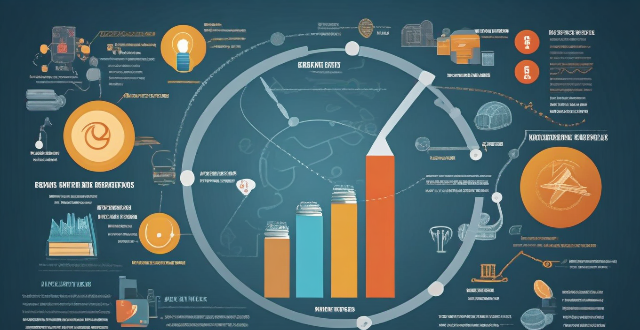
What are the benefits of using renewable energy sources for improving energy efficiency ?
Renewable energy sources offer multiple benefits, includingRenewable energy sources offer multiple benefits, including improved air quality, cost savings Renewable energy also provides stable energy prices and reduces dependence on imported fossil fuels, leading to greater energy security. Additionally, the development and deployment of renewable energy technologies create jobs and drive innovation and research in new technologies. Overall, investing in renewable energy is crucial for a sustainable future.

What are the most promising alternative energy sources for the future ?
The world is in urgent need of sustainable and renewable energy sources as it grapples with climate change and the depletion of fossil fuels. Some of the most promising alternative energy sources for the future include solar energy, wind energy, hydropower, geothermal energy, biomass energy, and tidal energy. Solar energy is abundant and renewable, with no greenhouse gas emissions during operation. It can be installed on rooftops or in large solar farms, and technological advancements have made it more efficient and affordable. However, it faces challenges such as intermittent power generation, high initial installation costs, land use concerns, and efficiency drops in colder climates. Wind energy is also renewable and abundant, with no greenhouse gas emissions during operation. It can be installed on land or offshore, and technological advancements have made it more efficient and affordable. However, it faces challenges such as intermittent power generation, noise pollution from turbines, impact on wildlife, and visual impact on landscapes. Hydropower is a reliable and renewable source of energy that can provide baseload power to the grid. It can also be combined with other renewable sources for energy storage. However, it faces challenges such as environmental impact on aquatic ecosystems, limited potential for expansion due to suitable sites being scarce, seasonal variability in water flow affecting power generation, and large upfront capital costs for construction. Geothermal energy is a reliable and renewable source of energy that can provide baseload power to the grid. It can also be used for heating and cooling purposes as well as electricity generation. However, it faces challenges such as limited to specific geographic locations with geothermal resources, environmental impacts such as water usage and land subsidence, high initial installation costs, and potential for induced seismicity in certain areas. Biomass energy is a renewable and abundant source of energy that can be used for both electricity generation and heat production. It can help reduce waste by utilizing organic materials that would otherwise be discarded and can provide jobs in rural areas through the collection and processing of biomass materials. However, it faces challenges such as emissions of greenhouse gases and air pollutants during combustion, competition with food crops for arable land and water resources, high transportation costs for biomass materials over long distances, and concerns about sustainability and carbon neutrality of some biomass sources. Tidal energy is a predictable and reliable source of energy due to the regularity of tides. It can provide baseload power to the grid when combined with other renewable sources like wind or solar energy and has minimal visual impact compared to other renewable sources like wind turbines or solar panels. However, it faces challenges such as limited to coastal areas with significant tidal ranges or fast-moving tidal currents, high initial installation costs for tidal turbines or barrages, potential environmental impacts on marine ecosystems and navigation routes, and technological challenges in designing equipment capable of withstanding harsh ocean conditions over time.

What are the benefits of using sustainable energy sources ?
Using sustainable energy sources provides environmental, economic, and social benefits. These include reduced greenhouse gas emissions, improved air quality, conservation of natural resources, protection of ecosystems, cost savings, job creation, energy independence, stable energy prices, improved public health, community resilience, education and innovation, and increased energy access. Transitioning to sustainable energy is essential for our future prosperity and survival.

How accurate are climate models in predicting future weather patterns ?
Climate models are complex mathematical representations designed to predict future weather patterns. The accuracy of these models is influenced by factors such as data quality, model complexity, and uncertainty in future emissions. Limitations include less accurate short-term predictions and uncertainty in model projections. Potential improvements include better data collection, advances in modeling techniques, and collaboration across disciplines.
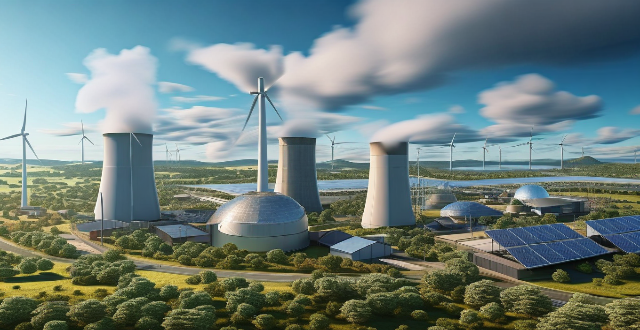
What role do renewable energy sources play in distributed energy systems ?
Renewable energy sources are crucial for distributed energy systems due to their clean, sustainable nature and local generation capabilities. They reduce carbon emissions, enhance energy security, promote local economic development, improve energy efficiency, and enable innovation in these systems.

How does clean energy investment impact the environment ?
Clean energy investment positively affects the environment in various ways, including reducing greenhouse gas emissions, conserving natural resources, improving air quality, promoting sustainable practices, and enhancing long-term energy security. These efforts help mitigate climate change, protect ecosystems, reduce pollutants, encourage innovation and job creation, and stabilize energy prices. As environmental challenges persist, prioritizing clean energy investment is crucial for the planet's health and future generations.